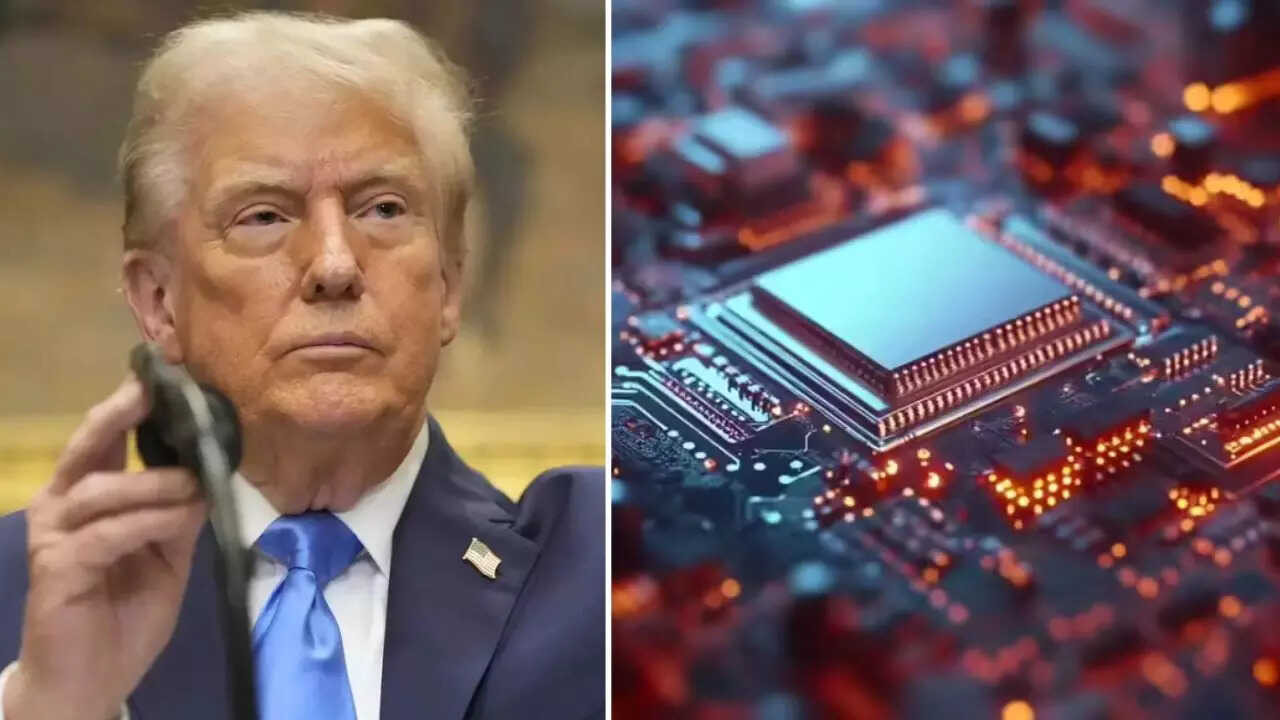The Trump administration is reportedly planning new tariffs on imported electronics, based on their chip content, to boost US manufacturing. This move could impose a 25% rate on chip value, potentially raising costs for American consumers and worsening inflation. Major chipmakers like TSMC and Samsung might face significant impact, as the policy aims to reshore critical production.
The Looming Chip War: Could Tariffs Reshape the Tech Landscape?
The air is thick with talk of tariffs, and the latest whispers from Washington suggest a potential shake-up in the world of consumer electronics. Imagine a world where your new smartphone, laptop, or even your smart refrigerator comes with an added cost, not due to inflation or supply chain woes, but because of a newly implemented “chip tax.” It sounds like something out of a dystopian tech novel, but sources suggest the previous administration seriously considered precisely this.
The idea? Slap tariffs on imported electronics to safeguard national economic security by boosting domestic chip manufacturing. It’s a bold move, one that could dramatically reshape the playing field for tech companies and, ultimately, impact consumers’ wallets. Let’s dive into what this could mean.
Why Target Chips? Understanding the Semiconductor Significance
Semiconductors, or chips, are the brains behind virtually every electronic device we use. From the phones in our pockets to the servers powering the internet, these tiny components are essential. They’re also incredibly complex and expensive to manufacture, requiring specialized facilities and a highly skilled workforce.
For years, the US has seen a gradual decline in its share of global chip manufacturing. Much of the production has shifted to Asia, particularly Taiwan and South Korea. This reliance on foreign sources has raised concerns about supply chain vulnerabilities, especially in light of geopolitical tensions. Proponents of tariffs argue that incentivizing domestic chip production is crucial for national security, ensuring that the US has a reliable source of these critical components, especially for defense and vital infrastructure.

A Tariff-Shaped World: Potential Impacts on Consumers and Companies
So, what would a world with chip-based tariffs actually look like? On the surface, it sounds straightforward: imported electronics become more expensive. But the reality is far more complex.
For consumers, the immediate impact would likely be higher prices on a wide range of goods. Smartphones, laptops, gaming consoles – anything with a significant chip component would likely see a price hike. This could dampen demand, particularly for discretionary items, and potentially slow down overall economic growth.
For tech companies, the tariffs would create a significant challenge. Companies that rely heavily on imported chips would need to decide whether to absorb the added cost, pass it on to consumers, or shift their supply chains. Absorbing the cost would eat into profits, while raising prices could make their products less competitive. Shifting supply chains is a complex and expensive undertaking, requiring significant investment and potentially leading to delays and disruptions.
Companies with existing US-based manufacturing facilities might see a boost, but even they would likely face challenges. Sourcing raw materials and specialized equipment could still rely on global supply chains, potentially offsetting some of the benefits of domestic production.
Don’t forget about potential retaliatory measures from other countries. If the US imposes tariffs on imported electronics, other nations might respond with their own tariffs, leading to a full-blown trade war.
Weighing the Risks and Rewards of Semiconductor Tariffs
There’s no easy answer as to whether chip-based tariffs are the right solution. Supporters argue that they are necessary to protect national security and revitalize domestic manufacturing. Critics warn that they could harm consumers, stifle innovation, and trigger a global trade war. It’s a high-stakes gamble with potentially far-reaching consequences.
A more balanced approach might involve a combination of policies, including targeted investments in domestic chip manufacturing, tax incentives for companies that bring production back to the US, and international cooperation to ensure a stable and secure global supply chain. Perhaps exploring strategic partnerships can make the shift more palatable. Regardless of the path chosen, there’s no doubt the future of the semiconductor industry is at a critical juncture. For more on the impact of technological advancements, read our recent article on [the future of AI in manufacturing](internal-link-to-related-article).
Ultimately, this discussion around semiconductor tariffs highlights the intricate dance between economic security, global trade, and technological advancement. It’s a conversation that will likely continue for years to come, shaping the future of the tech industry and the products we use every day.







